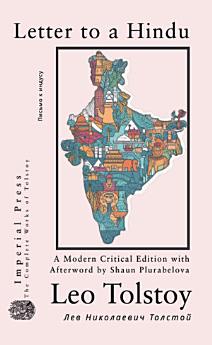Letter to a Hindu
About this ebook
In December 1908 Tolstoy composed this open letter at Yasnaya Polyana after receiving appeals from Taraknath Das, and he allowed its first appearance in the Lahore‑based Free Hindustan early the next year before it circulated in pamphlet form across Saint Petersburg and Calcutta under the alternative English title A Letter to a Hindoo. Short though it is, the piece distils the religious anarchism that Tolstoy had been working out since The Kingdom of God Is Within You (1894), interweaving passages from the Sermon on the Mount with verses on ahimsa that he cites from the Bhagavad‑Gita and the Kural, and declaring that the British Raj rests on the silent cooperation of its subjects rather than sheer force.
By linking an ascetic Christian ethic with South Asian scripture, Tolstoy offered revolutionaries a strategy that rested on moral suasion instead of insurrection, and many readers inside and outside India read the letter as a charter for passive resistance long before that phrase entered wide circulation. Its unadorned style, its insistence that “love is the only law” and its blunt arithmetic showing that a handful of foreigners could govern three hundred million Indians only by moral licence, made the pamphlet a brisk seller in provincial printing houses and a subject of earnest debate in secret study circles from Bengal to Bombay.




